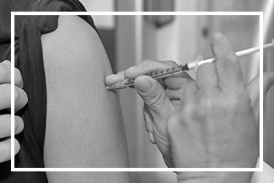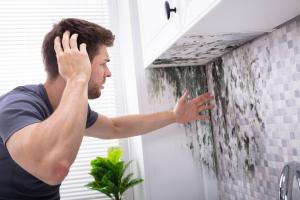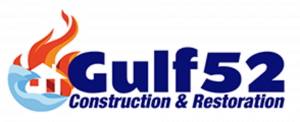Why DIY Mold Removal Can Be Hazardous and the Value of Professional Remediation Services
Earl Carr, Jr., president of Gulf 52 in Hammond, Louisiana, explains the risks associated with improper mold handling and why remediation should be approached with caution and expertise.
“Mold is a biological contaminant that spreads through microscopic spores. Attempting to remove it without proper containment, filtration, and protection can lead to greater exposure and cross-contamination,” said Carr. “Professional remediation addresses both the visible damage and the invisible risk.”
The Hidden Dangers of Mold
Mold is a naturally occurring fungus that thrives in damp environments. When mold begins to grow indoors, it can impact indoor air quality, compromise building materials, and pose respiratory hazards—especially for individuals with allergies, asthma, or weakened immune systems.
Common indoor molds, such as Aspergillus, Cladosporium, and Stachybotrys (black mold), can release spores and mycotoxins into the air. These contaminants are not always visible and can accumulate inside HVAC systems, wall cavities, behind cabinets, or beneath flooring.
In many cases, the mold seen on a surface is only a small part of the overall growth. Improper removal methods—such as dry brushing, sanding, or using bleach on porous materials—can agitate colonies and release more spores into the air, spreading contamination to previously unaffected areas.
Common Mistakes in DIY Mold Removal
Many individuals attempt mold cleanup with household cleaners or over-the-counter products. However, these efforts are often ineffective for porous materials like drywall, insulation, carpet, and wood. Applying moisture-based cleaners can exacerbate the problem by feeding the mold rather than eliminating it.
Other common issues with DIY methods include:
Lack of containment – Failing to isolate the affected area allows spores to travel through the air and settle elsewhere.
Inadequate protective equipment – Without proper respiratory gear, eye protection, and disposable suits, individuals risk direct exposure.
Insufficient moisture control – Removing visible mold without fixing the underlying water issue leads to recurrence.
Improper disposal of contaminated materials – Disposing of mold-infested debris without sealing it correctly can contaminate other parts of the property.
These mistakes not only fail to resolve the issue but can increase the scope of damage and the cost of future professional remediation.
Professional Mold Remediation: A Controlled Process
Licensed mold remediation companies follow industry protocols established by the Institute of Inspection, Cleaning and Restoration Certification (IICRC) and other regulatory bodies. This includes:
Moisture assessment and source identification
Containment setup with physical barriers and negative air pressure systems
Air filtration using HEPA filters to capture airborne spores
Removal and disposal of porous materials that cannot be cleaned
Cleaning and sanitizing of non-porous surfaces with EPA-registered products
Post-remediation verification and clearance testing
These steps ensure that mold is removed in a controlled, systematic way that minimizes the risk of cross-contamination and protects indoor air quality.
Long-Term Benefits of Professional Remediation
Beyond the immediate health and safety concerns, professional remediation also protects structural components and reduces the risk of future infestations. Untreated or poorly treated mold can compromise the integrity of framing, flooring, drywall, and insulation. Over time, this leads to costly repairs and a diminished property value.
In addition, certified remediation ensures that the issue is addressed according to industry standards—something that may be required for insurance claims, property sales, or rental compliance. Proper documentation of the remediation process can also support future disclosures and provide peace of mind to prospective buyers or tenants.
Legal and Insurance Considerations
Mold claims are often complicated under property insurance policies. Many insurers require evidence that proper mitigation efforts were made and that licensed professionals handled the remediation. DIY methods, especially those without photographic or written documentation, can create liability issues and reduce claim eligibility.
In some municipalities, especially in commercial or rental properties, mold remediation must be performed or verified by licensed professionals to meet local code requirements. Ignoring these mandates can result in fines, delayed occupancy, or legal disputes.
Preventive Insights
Mold remediation is not just about cleanup—it’s about prevention. Professional services often include moisture mapping and dehumidification recommendations that reduce the chance of future outbreaks. By identifying hidden leaks, condensation issues, and ventilation problems, property owners gain insight into how to maintain healthier indoor environments year-round.
Morgan Thomas
Rhino Digital, LLC
+1 504-875-5036
email us here
Visit us on social media:
Facebook
Legal Disclaimer:
EIN Presswire provides this news content "as is" without warranty of any kind. We do not accept any responsibility or liability for the accuracy, content, images, videos, licenses, completeness, legality, or reliability of the information contained in this article. If you have any complaints or copyright issues related to this article, kindly contact the author above.
Syncon Celebrates Milestone with Ribbon Cutting for New WATA Transfer Center
Omni Media Consulting Strengthens Commitment to Helping Marketing Leaders Navigate Complexity with Confidence
GEMGEM Launches Authenticated Peer-to-Peer Jewelry Resale Platform in the U.S.
Kalendarium
Więcej ważnych informacji
 Jedynka Newserii
Jedynka Newserii

 Jedynka Newserii
Jedynka Newserii

Problemy społeczne

Poziom wyszczepienia Ukraińców jest o 20 pp. niższy niż Polaków. Ukraińskie mamy w Polsce wskazują na szereg barier
Różnice w kalendarzu szczepień, bariery językowe, nieznajomość polskiego systemu szczepień oraz obawy przed skutkami ubocznymi szczepionek – to jedne z najczęstszych problemów, które prowadzą do tego, że poziom wyszczepienia Ukraińców w Polsce jest niższy niż Polaków. To może mieć wpływ na bezpieczeństwo zdrowotne w całym kraju. Fundacja Instytutu Matki i Dziecka podejmuje inicjatywę mającą budować postawy proszczepienne wśród imigrantów.
Polityka
J. Scheuring-Wielgus: Napięcia geopolityczne wymagają silniejszego zjednoczenia państw Europy. To lekcja z II wojny światowej

Parlament Europejski podczas specjalnej sesji w Strasburgu uczcił 80. rocznicę zakończenia II wojny światowej. – Jesteśmy zdeterminowani, by stanąć razem i powiedzieć jasno i stanowczo: nigdy więcej – podkreśliła przewodnicząca PE Roberta Metsola. Zarówno kombatanci, których obecność uświetniła uroczystość, jak i europosłowie podkreślali, że projekt utworzenia europejskiej wspólnoty był odpowiedzią na ówczesne zagrożenia dla pokoju, o który nieustannie trzeba wspólnie dbać.
Ochrona środowiska
Budownictwo modułowe coraz popularniejsze w samorządach. Teraz rozwój sektora jest napędzany przez KPO

Rozwój budownictwa modułowego jest coraz bardziej zauważalny w inwestycjach samorządowych. Wpływa na to przede wszystkim szybsze tempo prowadzonych prac w porównaniu z tymi, w których wykorzystywane są tradycyjne technologie budowlane. Istotną kwestią jest również spełnianie warunków środowiskowych, w tym wysoka efektywność energetyczna budynków, która ma wpływ na możliwość uzyskania dofinansowania z Krajowego Planu Odbudowy. Samorządowcy mają już niewiele czasu na finalizację dotowanych inwestycji. Termin upływa 31 sierpnia 2026 roku.
Partner serwisu
Szkolenia

Akademia Newserii
Akademia Newserii to projekt, w ramach którego najlepsi polscy dziennikarze biznesowi, giełdowi oraz lifestylowi, a także szkoleniowcy z wieloletnim doświadczeniem dzielą się swoją wiedzą nt. pracy z mediami.








.gif)

 |
| |
| |
|